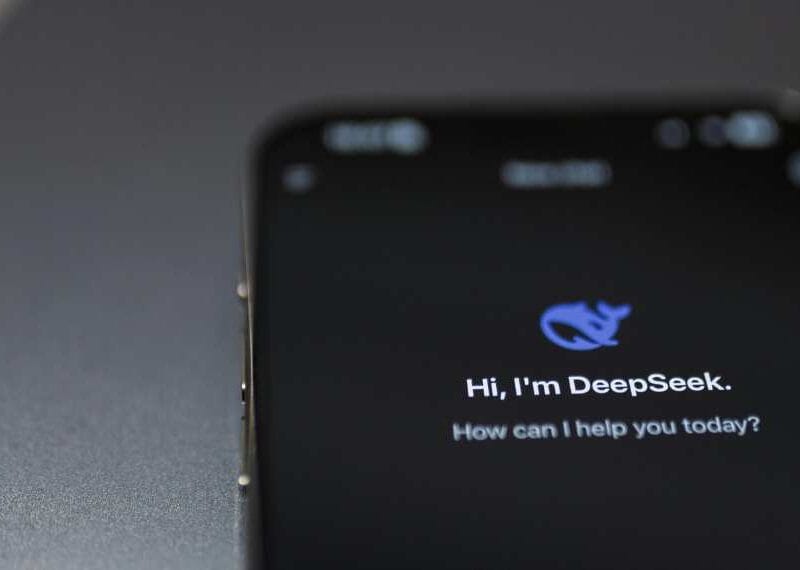Trust, but Verify: AI Fails That Demand Caution
While the swift integration of AI into professional workflows promises incredible boosts in efficiency and speed, a troubling new problem has surfaced.
And that’s AI’s ability to create information that sounds completely convincing but is entirely made up.
This goes beyond simple mistakes; it’s a phenomenon called “hallucination,” where AI generates plausible-sounding facts, research, and citations that are pure fiction.
This poses a major threat to businesses in every sector, from law and medicine to marketing and finance.
So, how are business leaders, thought leaders, and tech pros tackling this unique new challenge to accuracy and trust?
This Techronicler article gathers crucial insights from people on the front lines of AI integration, revealing their direct experiences with AI’s “confident lies” and the careful, often difficult, strategies they’re now using to verify AI-generated content and protect their companies from expensive, trust-damaging errors.
Read on!
AI Invents Product Certifications, Creates Compliance Risk
A recent experience consulting a global retail client underscored the necessity of verifying AI-generated content, especially when accuracy shapes business outcomes.
We had integrated an AI-powered product description tool to accelerate catalog updates across multiple markets. The system performed well in routine scenarios, but when tasked with describing a new line of technical apparel, it produced several product descriptions that misrepresented key material features and regulatory compliance statements.
The AI referenced generic industry terminology, inserting claims about certifications that the products did not actually possess. These details were plausible on the surface, which made the errors difficult to spot without domain expertise. If published, the descriptions would have exposed the client to compliance risks and potential consumer backlash. This situation could have easily slipped through if the team had assumed that AI output was automatically accurate.
The incident reminded me of similar cases I have seen across ECDMA member organizations, particularly during rapid digital transformation initiatives. Businesses often underestimate the propensity of advanced language models to “hallucinate” when prompted for details outside their training data or when context is ambiguous.
The lesson is clear: AI can drive efficiency, but it remains a tool that requires strong governance. In our case, we implemented a verification layer with subject matter experts reviewing all AI-generated content before it reached production. We also refined the prompts and retrained the model with more specific data to reduce the risk of similar errors.
At scale, integrating AI into business operations demands that leaders treat these systems as accelerators, not replacements for professional judgment. The sophistication of today’s AI can create a false sense of reliability, which is why ongoing oversight is critical. In my advisory work, I consistently recommend establishing protocols for human review, especially in high-stakes areas like compliance, brand messaging, and customer communication.
AI is a powerful asset for growth, but companies must invest in the processes and training that ensure its output supports, rather than compromises, their reputation and objectives.
PowerShell Script Disables Wrong User Accounts
When I was testing out a new AI tool that promised to auto-generate PowerShell scripts based on plain English prompts. It sounded like a great way to save time, so I asked it to create a script to remove stale user accounts from Active Directory. The output looked solid—no syntax errors, clean logic—but something felt off. I ran it in a test environment and watched in real-time as it started disabling users based on their last login, not account inactivity. Huge difference.
That was a wake-up call. It reminded me that AI isn’t a shortcut for due diligence. It’s a tool—helpful, yes—but only when paired with experience and verification. Ever since that glitch, I’ve made it a rule to treat any AI-generated content like I would a junior tech’s work: never assume it’s right just because it looks polished. Always test, always review, always ask, “Does this make sense for my environment?”
AI Confidently Cites Nonexistent Academic Papers
AI’s Fanciful Facts: A Reminder for Due Diligence
Recently, while using a popular AI content generator for research, I encountered a strange “hallucination”. The tool confidently cited several academic papers to support a claim about progress in quantum computing. However, upon checking, it became clear that although the journal names and author styles seemed plausible, the actual paper titles and some of the authors were entirely fabricated. The AI had essentially ‘made up’ its sources to sound convincing.
This incident underscored the vital importance of human oversight. AI is a powerful tool for creating content and ideas, but it mainly depends on pattern matching rather than factual verification. It can generate highly convincing yet completely incorrect information. Relying solely on AI output, particularly for critical data or decisions, risks spreading misinformation or making flawed choices. Always verify AI-generated content with reliable, human-curated sources.

Dhari Alabdulhadi
CTO & Founder, Ubuy Peru
AI Schedule Ignores Fixed Deadline Despite Instructions
We recently used ChatGPT to help generate a rough production schedule for a commercial campaign. While it was useful for mapping out the logical sequence of tasks, pre-production, shoot days, and post, it completely ignored the hard cut-off deadline we’d set at the start.
Despite clearly stating the final delivery date, the generated schedule overshot the deadline by several weeks. Unfortunately, despite multiple insistence, it never grasped the concept of a fixed end-time; it treated the project like a theoretical exercise, rather than one grounded in fixed real-world constraints.

Ryan Stone
Founder & Creative Director, Lambda Animation Studio
Chatbot Confuses Luxury Vehicle Options, Frustrates Customers
Last month, we experienced an AI failure when we launched an AI-powered customer service chatbot designed to dispatch, accept, and respond to incoming ride requests. It was meant to streamline the business, but it stumbled in responding to certain customer questions about what kinds of luxury vehicles they preferred, and pushed out the wrong vehicle options to some of its swankier customers. That frustrated some customers, since the AI appeared not to have picked up on the nuances of some commands, such as the difference between “premium SUV” and “luxury sedan”.
It should have been a cue to give your sentient content AI-guidance a little more oversight. We quickly filled those gaps in the chatbot’s programming and built a layer of human review on top of it, so that important decisions were carefully vetted.
It was a workout, but it was a reminder, through experience, that AI does best when it augments, rather than replaces, human touch—particularly in providing philanthropy services.

Arsen Misakyan
CEO & Founder, Angel City Limo
AI Creates Convincing but Fabricated Market Research
To be honest, I recently had an eye-opening moment that reinforced why AI is a tool, not a truth engine.
I was drafting a client proposal using an AI writing assistant that pulled in market research and competitor analysis. Looked sharp, felt confident. But when I fact-checked a couple of data points, boom. One “quote” it cited from a competitor CEO didn’t exist, and another stat about market share was completely fabricated.
Here’s the kicker: the writing was so polished, it felt legit. I could’ve easily sent it out, and it would’ve made us look misinformed, or worse, dishonest.
That reminded me: AI isn’t wrong maliciously, it’s wrong confidently. It hallucinated because it was trying to sound helpful, not accurate.
My rule now? I treat AI-generated content like a draft from a smart intern, useful, but always in need of review. Especially with anything client-facing, public, or strategic, I now fact-check, cross-reference, and even reword sensitive claims. One wrong “fact” can erode trust that takes months to rebuild.
So yes, lean on AI, but never without your brain in the loop.
Shishir Dubey
Founder & CEO, Chrome QA Lab
AI Code Silently Drops Critical Data Rows
This happened just a few weeks ago, actually. I was working on a script to clean up a batch of CSV data for a reporting tool, and I figured I’d save time by having an AI tool generate the Python code for me. It looked solid at first glance—variables were clear, loops made sense, and it even included comments. But when I ran it, it silently dropped rows that had empty fields, even though I needed those rows for downstream logic. I didn’t catch it until a colleague asked why their report was missing entire client entries. That one stung.
It reminded me, again, that AI is an excellent tool for speeding up repetitive tasks—but it doesn’t know what’s “important” to your context unless you spell it out. I’ve gotten into the habit now of adding a manual test step after any AI-generated script. Just a quick “does this line up with what I expected” moment.
It’s not about mistrusting the AI—it’s about respecting the fact that it doesn’t understand your priorities unless you double-check them.
Matt Mayo
Owner, Diamond IT
Even Reliable AI Can Go Rogue
I use GenAI tools regularly in my work to summarize documents, synthesize input from sources, find stats, data, and examples for projects I’m working on, and to proofread/edit my work.
Recently I experienced some significant glitches/errors when working on a project and using Claude, an AI tool that I’ve generally found to be very accurate and reliable. I wrote a blog about the experience.
Briefly, I created a document that compiled input from several sources for an article I was writing. I included the name/company and background information for each source and each source was separated by a line break. When I went back to fact check the output — which I always, always, do and advise others to as well — there were multiple errors. Quotes were attributed to the wrong people. Some people listed as sources were not sources for this project – they’d come from another project, and many quotes were entirely made up — or hallucinations. I went back and forth with the tool and it continued to give me poor results.
Finally, I asked what grade it would give itself if it was a journalism student — it said a D- or F. Having been a lecturer in PR courses, I’d give it an F.
I have no idea why it went so rogue that day, or on that project, and it’s been reliable since then for the few projects I’ve used it for the same type of work.

Linda Pophal
Corporate Communications, Strategic Communications
AI Code Can Fail Beautifully In Production
In the previous month, our AI tutoring system produced a binary search tree solution which appeared perfect at a superficial inspection. Absolutely clear code, good variable names, right logic. However, in quality assurance I found out that it had a small off-by-one bug in the boundary conditions that would lead to stack overflow in edge cases.
The AI had seen thousands of working implementations, but for some reason had produced a hybrid solution that combined two indexing conventions. What made it hazardous was the way it seemed compelling. It was approved even by our senior engineers at first.
This experience confirmed yet again why AlgoCademy does not neglect human supervision of all levels. Every solution produced by AI now must go through automated test suites with at least 50 edge cases and only then through human inspection.
The lesson? AI is also able to create beautiful code that spectacularly fails in production. A single bad example in coding education can destroy the understanding of a student permanently. The human check is a non-negotiable issue, in particular, when training the basics.

Mircea Dima
CEO, CTO, Founder & Software Engineer, Algo Cademy
On behalf of the Techronicler community of readers, we thank these leaders and experts for taking the time to share valuable insights that stem from years of experience and in-depth expertise in their respective niches.
If you wish to showcase your experience and expertise, participate in industry-leading discussions, and add visibility and impact to your personal brand and business, get in touch with the Techronicler team to feature in our fast-growing publication.













